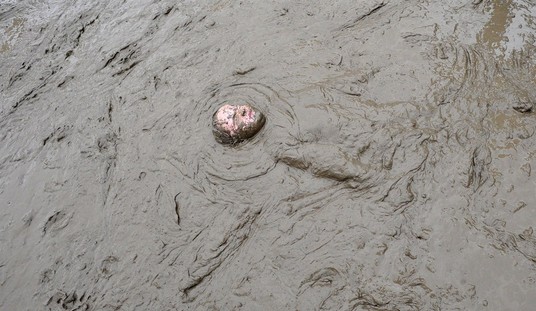Santa and his sled landed on my roof last night, but unfortunately, I had fallen asleep by the fire and didn’t get a chance to run out to see if Rudolph really does have a red nose. One thing is for sure, most reindeer don’t have glowing cherry schnozzes—but the Eurasian mountain variety living in the Arctic Circle have a magic trick not seen elsewhere in the animal kingdom. They can change their eye color from yellow to blue.
I would love to do that at a party sometime. National Geographic explains the phenomenon:
In the summer, reindeer’s tapetum lucidum—a mirror-like layer at the back of their eye—is a luminous gold streaked through with turquoise, iridescent like a golden opal. But in the winter, that layer turns a deep, rich blue.
That’s pretty cool, but it would be even more impressive if they could be like David Bowie and have two different colored eyes at the same time:
Anyway, it got David Bowies eyes. pic.twitter.com/2OolS9Bxpz
— Rick Hendriks (@hendriks_rick) July 13, 2021
The mirror-like tapetum also reflects light, which explains the “deer in the headlights” effect. Deer’s eyes aren’t actually glowing; it’s just your car’s own lights being reflected back at you. Animals that need to see well in low light— raccoons, cats, owls—all have tapetum lucidum.
Why would reindeer have evolved the ability to change their eye color? NatGeo put an astrophysicist and a neuroscientist on the case. Their answer is complicated and way above my pay grade, but the simple explanation is that reindeer’s eyes turn blue in the dark months to pick up more light. “What we’ve found is a really great biological mechanism that’s totally unique and bizarre—and makes perfect sense,” says Glen Jeffery, a neuroscientist and expert on the phenomenon.
Their conclusion:
So why do reindeer tapeta turn blue in winter? The answer probably has to do with maximizing light absorption in the blue and below-blue color range during the long, dark winter twilight.
A Reindeer's eyes turn blue in the winter so they can see better in low light, blue eyed people can also see better in the dark than brown eyed people! pic.twitter.com/4r1Edyh1Tb
— Learn Something (@LEARNS0METHlNG_) December 19, 2022
Way up in the North, the sun doesn’t even rise in winter, leaving reindeer in deep twilight for months at a time. Winter twilight is at least 100,000 times dimmer than summer daylight, and it’s also tinted a rich blue. The change in color of the tapetum, along with increased dilation of the pupils, make it easier for deer to spot predators and find food. They can see in almost total darkness:
“You add these things up and the sensitivity of their eyes is at least a thousand times higher in winter than in summer,” says researcher Nicholas Tyler at the Arctic University of Norway.
Scientists suspect other species may have similar adaptations, but they have yet to discover them.
I wish you a Merry Christmas, happy holidays, and good cheer. Although we may never solve the mystery of Rudolph’s red nose, we can now at least explain the Case of the Changing Reindeer Eyes.
Meanwhile, if you’re a reindeer fan, here’s my parting gift to you:
In Norway they Close the Roads for Reindeer to Cross pic.twitter.com/3dDhrzqQ8I
— Gabriele Corno (@Gabriele_Corno) December 17, 2022














Join the conversation as a VIP Member